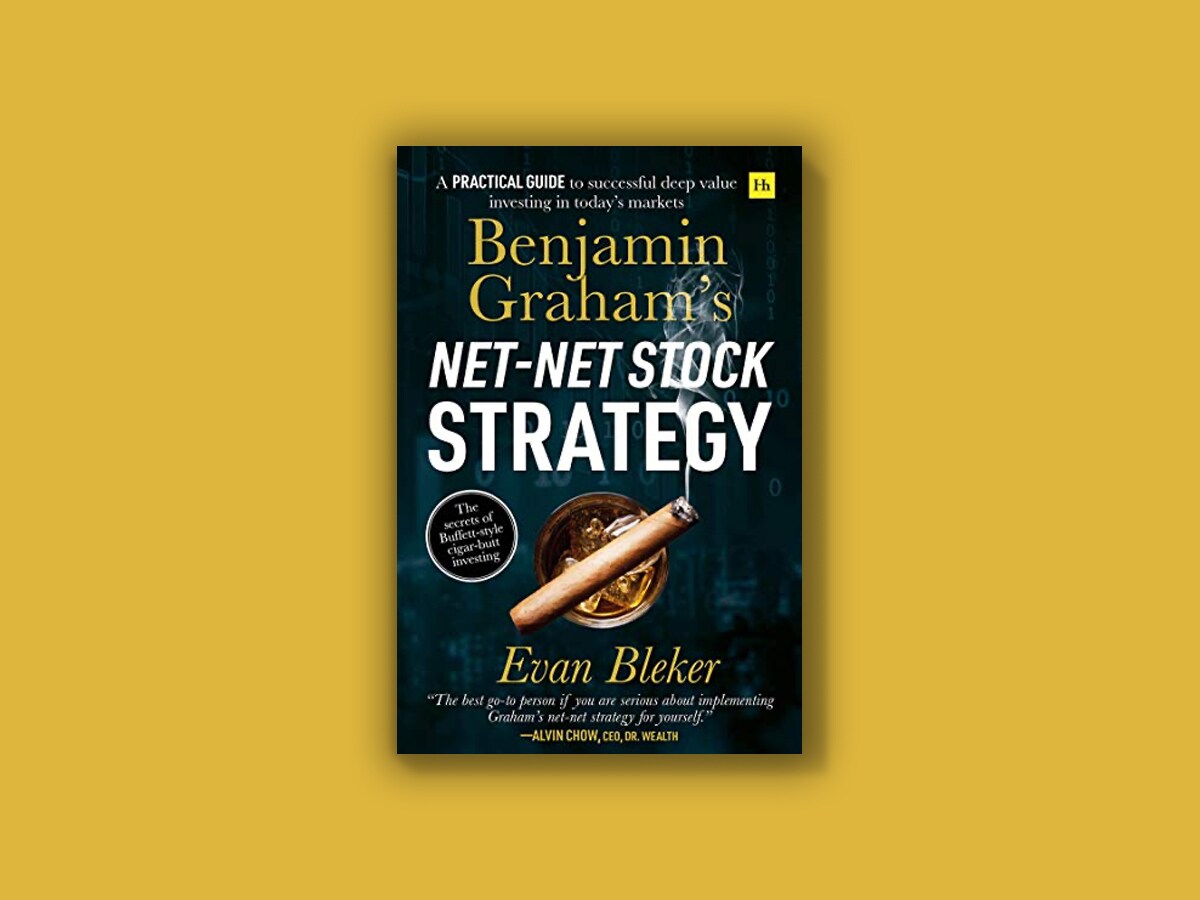Picking stocks based on a growth or value strategy is one of the oldest ways to build a portfolio. As global stock markets could begin to show signs of a rotation towards value, what better time to revisit the great Benjamin Graham’s teachings?
Known as the “father of value investing,” Graham is an influential investor who many experts look to when building out a value-investing approach. Evan Bleker, a professional investor, has spent 10 years studying Graham’s technique and successfully beat the market by using a net-net strategy.
To provide a cohesive guide to the strategy, he wrote a book called Benjamin Graham’s Net-Net Stock Strategy: A Practical Guide To Successful Deep Value Investing In Today’s Markets, which was published by Harriman House.
Bleker, who founded the Net Net Hunter platform, wrote the book to leave a blueprint for readers to find the “best-value investing strategies ever created”.
“Graham provided investors with a tremendous gift when he developed his net-net stock strategy, but he didn't go into much depth about how investors should implement the strategy,” he tells Opto. “Instead, there were bits and pieces on the strategy scattered throughout dozens of written works that needed to be stitched together into a cohesive whole.”
“Graham provided investors with a tremendous gift when he developed his net-net stock strategy, but he didn't go into much depth about how investors should implement the strategy. Instead, there were bits and pieces on the strategy scattered throughout dozens of written works that needed to be stitched together into a cohesive whole” - Evan Bleker
During Bleker’s research, he was very influenced by Warren Buffett’s “cigar butt” approach that looked for absurdly cheap stocks with qualitative facts. “Imagine buying a strong and growing insurance firm at a PE of just 0.5x! These are the sort of net nets that I hunt for today,” he adds.
The following is an excerpt taken from chapter three of Benjamin Graham’s Net-Net Stock Strategy, published with permission.
A closer look at Graham’s net-net working capital formula
Famed value management firm Tweedy, Browne once called net-net investing the oldest systematic approach to investing that they knew of. Net-net investing is indeed old, going back at least as far as Graham’s early career. Graham first publicly discussed the practical utility of buying stocks below their liquidation value in the early 1930s. But it’s unclear whether Graham was pointing out a new approach to investing or highlighting a much older tradition.
Net-nets first hit public awareness in a big way during one of America’s darkest periods. The world had just suffered a terrifying stock market drop and was in the midst of the greatest economic depression of the previous 600 years..14 Due to the massive market crash from 1929 to 1932, roughly one-third of all publicly traded companies were trading below a reasonable assessment of their liquidation value. At the time, Graham referred to many of these as net quick companies, and included only cash, short-term investments, and receivables in his calculation. Later in his career, when assessing liquidation value, he would come to include all of a company’s current assets and recommend that enterprising investors focus on these working capital stocks for purchase.
Graham used a few different formulas as he developed the approach throughout his career, and his writings are littered with different terms for the strategy. Some of the most prevalent formulas and terms used throughout the past century include:
- Net cash stocks: Stocks that trade below their net cash value, cash and equivalents less all obligations prior to the common. Obligations prior to the common essentially includes anything that has to be paid by the owners of the business, such as loans, credit from suppliers, taxes, preferred dividends, or even the retirement of preferred shares.
- Net quick stocks: More conservative than today’s approach, these only take into account a company’s more liquid current assets. Here, cash and cash equivalents, short-term investments, and receivables are included while anything else (most notably inventory) is excluded from the calculation.
- Net-net working capital stocks (NNWC stocks): Less conservative than net quick stocks, these take into account all current assets but discount current assets (e.g., short-term investments, receivables, inventory, and prepaid items) for a more conservative valuation. Graham also included fixed assets, though at an extreme discount to their book values.
- Working capital stocks/net working capital stocks/NCAV stocks: Graham used these terms interchangeably but all refer to the same general approach, which takes into account all current assets.
- Net-net stocks/net-nets: A slang term derived from netting current assets against current liabilities, and netting this amount against long-term liabilities and obligations prior to the common.
In this chapter, I walk you through one of the most common alternative formulas: net-net working capital investing. In the process, I hope to help you build a deeper understanding of the main formula so you can apply it well in your own practice.
Disclaimer Past performance is not a reliable indicator of future results.
CMC Markets is an execution-only service provider. The material (whether or not it states any opinions) is for general information purposes only, and does not take into account your personal circumstances or objectives. Nothing in this material is (or should be considered to be) financial, investment or other advice on which reliance should be placed. No opinion given in the material constitutes a recommendation by CMC Markets or the author that any particular investment, security, transaction or investment strategy is suitable for any specific person.
The material has not been prepared in accordance with legal requirements designed to promote the independence of investment research. Although we are not specifically prevented from dealing before providing this material, we do not seek to take advantage of the material prior to its dissemination.
CMC Markets does not endorse or offer opinion on the trading strategies used by the author. Their trading strategies do not guarantee any return and CMC Markets shall not be held responsible for any loss that you may incur, either directly or indirectly, arising from any investment based on any information contained herein.
*Tax treatment depends on individual circumstances and can change or may differ in a jurisdiction other than the UK.
Continue reading for FREE
- Includes free newsletter updates, unsubscribe anytime. Privacy policy


